|
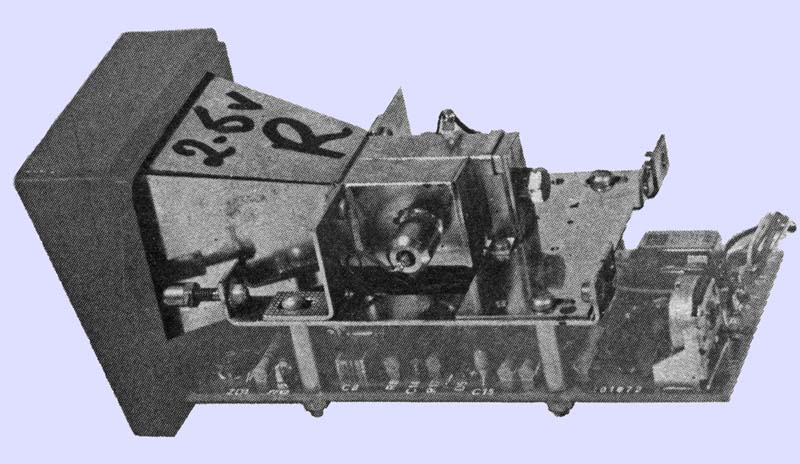
The original Wessex Intruder Alarm.
Intruder alarms operating in the 10.6 GHz region were a popular source of surplus parts for the amateur community in the 1980s. As the move to infra-red passive sensors took hold, many microwave based doppler modules appeared on the surplus market. At rallies they normally appeared as the microwave head alone and sold for around £10.00.
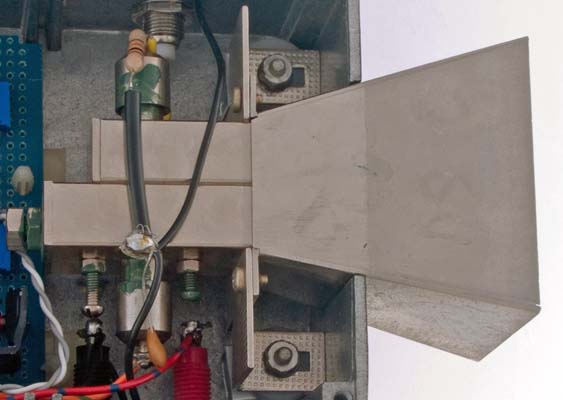
The full twin cavity module with original horn.
In raw form the twin cavities lent themselves to portable beacon use. See G8LSD Portable Beacon for details.
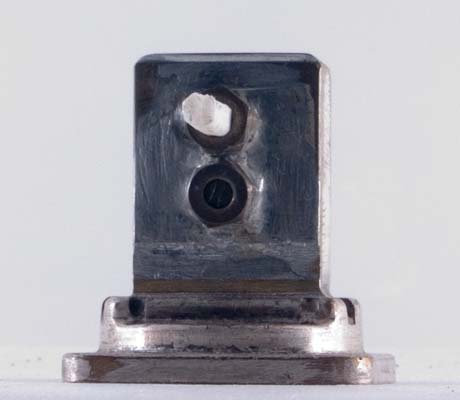
The choke assembly from a Wessex unit has been made into a stand alone Gunn oscillator with PTFE tuning screw, and the purchase of the Wessex units to provide a valuable source of components was commonplace.
The twin cavities were soft soldered together and with the active components removed, carefully as the mixer diode was very sensitive to static, it was easy to separate the cavities. The Gunn oscillator became a readily available source for amateur use although more commonly it was re-engineered using WG16. The plated brass screw in the original was typically replaced with a PTFE screw and this proved an effective tuning mechanism.
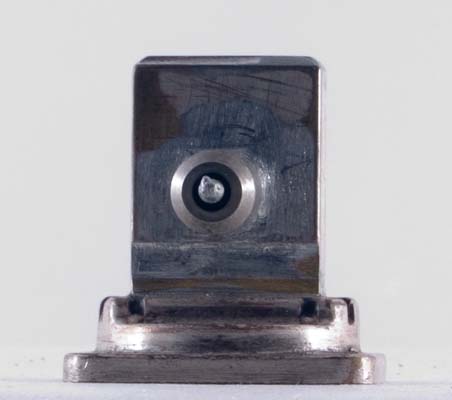
Main diode connection and choke housing.
The choke was satisfactory for the low voltage DC supply and audio modulation. The DC needed to be regulated to achieve a good measure of frequency stability. Even so the drift was measured in MHz.
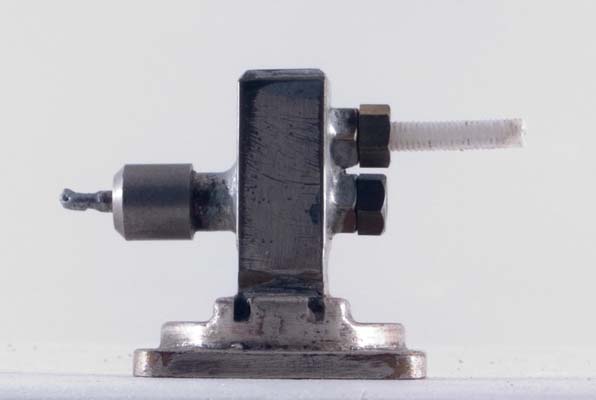
In profile the spacings are clear.
These units made small and compact Gunn oscillators and found applications as transmitters and beacons. The output was typically 5 mW and the DC input was around 7.5 volts. The frequency could be adjusted over a small range by altering the Gunn voltage. If carried too far the power dropped or the module refused to oscillate.
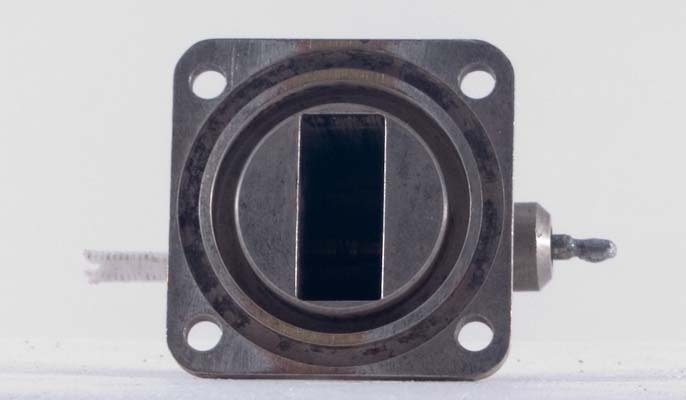
The original cavities were built in WG16 and fitting a WG16 flange was simple.
For many applications the soft soldering of a WG16 flange onto the waveguide was all that was required. Popular flanges came in two forms. One type allowed the waveguide to pass right through the brass flange. These were the simplest option. The other type had the waveguide fitting into a slot on the back of the flange and this required some care to avoid solder entering the waveguide. Solder is very lossy at microwave frequencies.
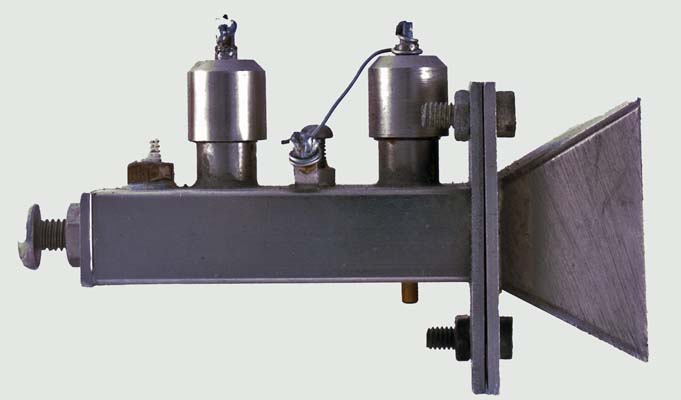
Here we have the less well known in-line mixer version.
This in-line module arrived in a box of old components. During the 1980s when we used Gunn oscillators I never had dealings with them. The in-line units that were available were the die-cast Solfan units.
The in-line module measures 25.4 x 12.8 x 65 mm. The flange at 41 mm square mates with WG 16. The horn is 52 x 35 mm. The 11 mm diameter chokes stand 23 mm above the broad face of the waveguide.
The dual cavity module has a 55 mm square horn.
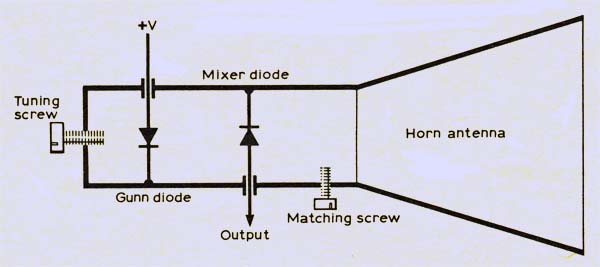
The diagram above shows the general arrangement of all in-line doppler modules. Note: the main tuning screw is normally in the broad face of the waveguide.
|